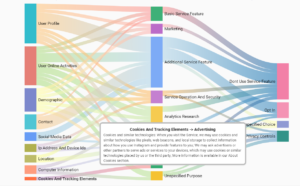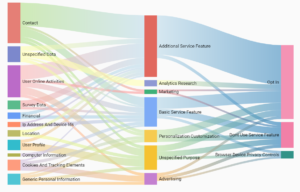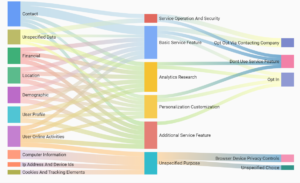Who’s Insuring Your Privacy?
The Federal Trade Commission is trying, but we live in a country where the mantra remains “Buyer Beware.” Unless you’re reading the privacy policies on every service, application and connected electronic you utilize, and make a conscious effort to control the collection and use of your data by not using certain applications, you’re challenged to protect your own privacy. Once you’ve agreed to share your data, you can’t control its safety.
This week, I added a fascinating read to Research & Trends, the Federal Trade Commission’s “Privacy & Data Security Report 2017.” It reads like the Netflix mini series Dirty Money, (which I find riveting, while infuriating). In this report, you’ll read about cases against Lenovo, Uber and Vizio, and realize how little control we have over the security and protection of our data once it’s captured, even by brand names we hope to trust.
This article got me thinking about privacy policies, which I only read as they relate to my phone. A quick on-line search of studies around privacy policies revealed that most of us don’t read them. Even if you do read the privacy policy, it’s written to protect the provider of the service, so you may not fully understand what you’re agreeing to.
Privacy policy translation is a real problem and there’s a new tool developed by Switzerland’s Federal Institute of Technology at Lausanne (EPFL), the University of Wisconsin and the University of Michigan, to help us all out. The Wire just announced the release of Polisi (Private Policy Analysis) this month. This tool uses artificial intelligence to read the privacy policy of any service you enter. A pictorial image illustrates the flow of collected data and anywhere you hover, the wording of the privacy policy associated with that portion of the diagram will appear for you to read. I decided to compare the data collection of social media platforms, below. The most left column illustrates the type of data collected, the center column lists what they do with it, and the far right lists your options regarding data collection. In this first example of Instagram, I’ve hovered over Cookie & Tracking Elements:
Example of Instagram: 
Example of LinkedIn:
Example of Facebook:
Polisis will show you very similar data for LLBean, Netflix, Shutterfly etc. and helps you visualize the amount of data these companies are obtaining and the great responsibility they have for it’s protection.
As data privacy and data security go hand in hand, I’d be remiss if I didn’t point out the new “Cost of Cyber Crime Study” posted to Research & Trends. The study, by Ponemon Institute, provides an in-depth discussion of the rising cost components of managing cyber attacks, those industries experiencing the most incidents, and insights into best technological investments to improve security postures going forward. This is a good report to share with your network, prospects or re-post to social media.
Want to keep up with the latest reports being added to Research and Trends? Subscribe to our Friday e-newsletter!
Topics Cyber
Was this article valuable?
Here are more articles you may enjoy.



 Hurricane Beryl Triggers Record Payout for Caribbean Insurer
Hurricane Beryl Triggers Record Payout for Caribbean Insurer  Allstate Seeking 34% Rate Hike on California Homeowners Insurance
Allstate Seeking 34% Rate Hike on California Homeowners Insurance  Insurers Hike Rates as Extreme Storms Like Beryl Proliferate
Insurers Hike Rates as Extreme Storms Like Beryl Proliferate  What Happened to Reinsurance ‘Class of 2023’? Hard Market Defies Age-Old Patterns.
What Happened to Reinsurance ‘Class of 2023’? Hard Market Defies Age-Old Patterns. 


